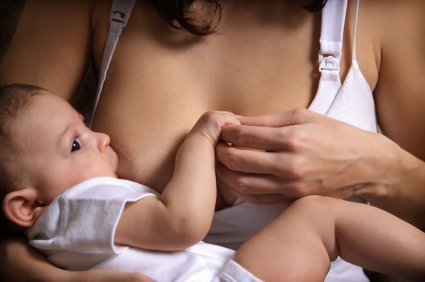What a great weekend we had for Earth Day. At Boutique Bummis we celebrated with the Great Cloth Diaper Change event, which we co-hosted with Baby Auric Diaper Service. We had 93 parents and babies gather together from all parts of Montreal, Laval, Sherbrooke, Trois Rivieres and even some coming from the Quebec City area, all to celebrate cloth diapers. It was so much fun seeing all the cloth diapered babies in the room!
While we counted down to 12:30 exactly, we read some wonderful stories about respecting our planet in honor of earth day. We followed that with a great parent-baby yoga warm-up with Martina from StudioVie and face-painting and animation by A Painted Bouquet and Lulu the Clown. The the main event was a grand success thanks to our 3 official witnesses: human rights activist, Milton James Fernandes, Jamie Orchard from Global Television, and cloth diaper expert Lesley Everest, from MotherWit Doula Care. They were incredibly wowed with the families that attended and genuinely thrilled to be a part of our event.
Thank you to everyone who participated and braved that less-than-perfect weather to join us. We’ve been very excited to see photographs posted from around the world in the past couple of days, so we want to be sure to share favorites from our event. See more photographs on our Facebook page. If you want to re-live the event on video, you can see also us on Global Montreal!
We cannot let this update go out without a big e-hug to all our friends and supporters. Our after-party was catered by Dolce Vita Bakery, all participants went home with amazing gift bags and 27 lucky participants also left with a rockin’ raffle prize too. In total we gave away over $15,000 of swag! Please take a minute to look at all the generous companies below. This event just would not have been possible without them.
Keep your fingers crossed, but once we get word from Guinness World Records about the results of the record attempt, we will be sure to post about it on the event page. All participants can then order official, personalized certificates from Guinness World Records as soon as the official record-breaking count is confirmed, but not a minute before!
Instructions to claim your certificate:
Visit: http://www.guinnessworldrecords.com/member/orderparticipationcertificates.aspx
Enter Claim ID 372250 and the participation code: jvzb4394JV.
See you next year, but in the meantime… keep spreading the world that WE ❤ CLOTH!
Love ot our sponsors:




 “Milk”
“Milk” “Bath”
“Bath” “More”
“More” “I Love you”
“I Love you”





